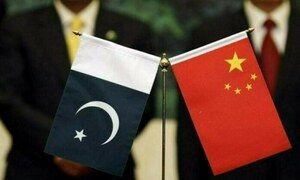Fauji cement’s (PSX: FCCL) fortunes have catapulted this year with the amalgamation of the company with another, one Askari Cement. Between the third and the fourth quarter of FY22, the company’s revenues and gross profits quadrupled. As a result, both the topline and post-tax earnings in the full-year doubled for Fauji compared to last year. But barring that, everything else remained pretty elementary.
Pre-Askari, Fauji’s third quarter performance was at par with or slightly higher than other players, but together with Askari, Fauji has entered a new league. Compared to peers’ revenue during the year (unconsolidated), Fauji stands at the fourth spot jumping ahead of Mapleleaf, Kohat, and Cherat.

The trajectory of the financial performance however remained more or less the same as other cement players. The dynamics coming into play this year took their own unique turn. Even though demand—both domestic and abroad—was down, substantially improved retention in the local markets allowed revenues to grow across the board during the year. Fauji’s revenue per unit sold in 9MFY22 grew 35 percent which led to the company’s revenue growth of 31 percent during the period. Mind you, the off take was lower—down 3 percent.
Though coal prices in the global markets have been having quite the rally, cement manufacturers have moved to Afghan coal which is more affordable. As a result, most if not all cement makers have avoided the thrashing to their margins due to sky-rocketing coal prices. Other costs however have remained high such as fuel and power. Even so, the full-year margins for Fauji were higher at 27 percent in FY22 than last year (25%).

Overheads remained steady at 5 percent of revenue (these include other charges and expenses). However, due to Askari’s higher borrowings, finance costs to 2 percent of revenue from 0.5 percent last year. Between Q3 and Q4, finance costs grew from almost negligible sums to over a billion rupees (4% of revenue during Q4) worsened only by higher interest rates. Other income for the company was 8 percent of before-tax profits (5% in FY21) while the effective tax stood at 38 percent due to the one-time super-tax. All in all, the year wrapped up with earnings growing 105 percent landing third in line after Bestway and Lucky Cement.
With improved market share and financing position, the glad tidings likely are short-lived even as Fauji has become a rather consequential player in the cement industry. Demand opportunities in the upcoming quarters are few and far in between as high construction costs become prohibitive for private sector spending. Public sector spending in construction meanwhile is down, even though rehabilitation due to floods may route some precious funding that way. Exports to Afghanistan and other key markets are down owing to a host of reasons ranging from political and economic tensions. With reduced demand would come the lower likelihood for persistent hike in prices despite costs rising, which will result in margin suppression in the immediate term.





















Comments
Comments are closed.